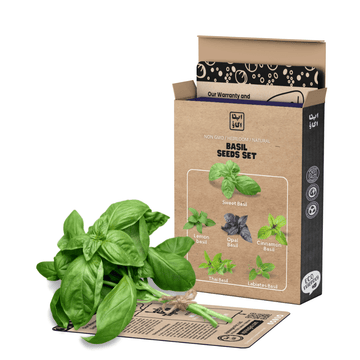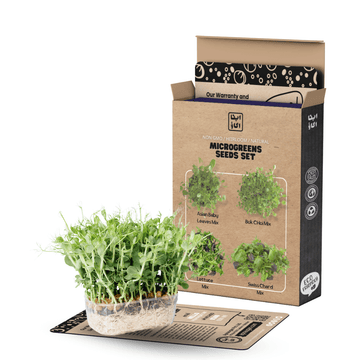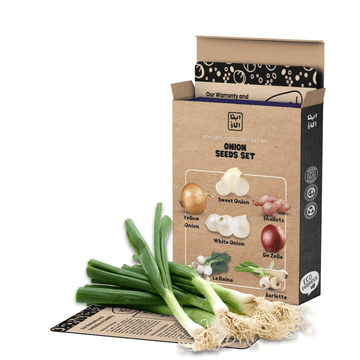Table of Contents
- The Fascinating World of Microgreens
- Why Microgreens Are Gaining Popularity
- Uncovering the Nutritional Benefits of Microgreens
- Growing Microgreens at Home: A Step-by-Step Guide
- Culinary Adventures with Microgreens
- Where to Get Microgreens: Options and Insights
- The Future of Microgreens
- Frequently Asked Questions (FAQs)
- Conclusion
The Fascinating World of Microgreens
Microgreens are young edible plants harvested just after their first true leaves emerge. Despite their small size, these greens are packed with vibrant colors, unique textures, and bold flavors. They are widely regarded as versatile culinary ingredients, elevating the visual and taste profiles of dishes with ease.
Measuring between 1 to 3 inches in height, microgreens are cultivated from a variety of seeds, including vegetables, herbs, and grains. Their diverse characteristics make them favorites in both home kitchens and gourmet dining.
Why Microgreens Are Gaining Popularity
The increasing demand for microgreens is fueled by their impressive attributes:
- Nutritional Density: Packed with concentrated vitamins, minerals, and antioxidants, microgreens offer superior nutritional value compared to their mature counterparts.
- Ease of Cultivation: They thrive in small spaces and grow well indoors, making them accessible to urban gardeners and beginners alike.
- Quick Growth Cycle: Microgreens are ready to harvest within 7–21 days, satisfying impatient growers.
- Culinary Appeal: With vibrant hues and intense flavors, they enhance the visual and sensory qualities of any dish.
- Health Benefits: Their nutrient-rich composition supports digestion, boosts energy, and reduces inflammation, making them a favorite among health-conscious individuals.
Uncovering the Nutritional Benefits of Microgreens
Microgreens are often hailed as "nutrition powerhouses." Here's why:
- Vitamins: Abundant in vitamin C (immune booster), vitamin K (bone health), and vitamin E (antioxidant properties).
- Minerals: Rich in calcium, magnesium, potassium, and iron, essential for overall well-being.
- Antioxidants: Contain carotenoids and polyphenols, which protect against chronic diseases.
- Phytonutrients: Bioactive compounds that offer anti-inflammatory and anti-cancer properties.
- Fiber: Contributes to digestive health and blood sugar regulation.
- Protein: A moderate source of plant-based protein, especially useful for vegetarians and vegans.
Growing Microgreens at Home: A Step-by-Step Guide
Cultivating microgreens at home is simple and rewarding.
-
Setup:
- Use shallow containers with drainage holes.
- Choose a growing medium like potting mix or coconut coir.
- Position containers in a well-lit area or under grow lights.
-
Planting:
- Spread seeds evenly and press them gently into the soil.
- Cover with a humidity dome to encourage germination.
-
Watering:
- Mist daily to keep the soil moist without overwatering.
-
Harvesting:
- Cut microgreens just above the soil line after 7–21 days when the first true leaves appear.
Culinary Adventures with Microgreens
Microgreens bring creativity to the kitchen:
- Salads: Add texture, flavor, and a nutrient boost.
- Sandwiches & Wraps: Use them for a fresh, crunchy layer.
- Garnishes: Enhance soups, pasta, and omelets with vibrant greens.
- Smoothies: Blend into your favorite drinks for added nutrition.
- Stir-Fries: Toss in at the end of cooking for a fresh finish.
Popular Varieties:
- Basil: Sweet and aromatic, perfect for Italian dishes.
- Radish: Peppery and bold, great for salads and Asian cuisine.
- Sunflower: Nutty and mild, ideal for versatile use.
- Kale: Hearty and earthy, excellent in smoothies.
Where to Get Microgreens: Options and Insights
- Grow Your Own: Economical and rewarding.
- Farmers' Markets: Fresh, locally grown options.
- Grocery Stores & Online: Convenient and readily available pre-packaged microgreens.
The Future of Microgreens
Microgreens are poised for growth in culinary and nutritional spaces:
- New Varieties: Cultivators are creating novel flavors and textures.
- Mainstream Use: Expect wider availability in grocery stores and restaurants.
- Sustainability: Advances in hydroponics and vertical farming will reduce their environmental impact.
- Research: Ongoing studies may uncover additional health benefits.
Frequently Asked Questions (FAQs)
-
Q: Can I grow microgreens indoors?
A: Yes, using grow lights or a sunny windowsill. -
Q: How long do they stay fresh?
A: Store in an airtight container; they remain fresh for 5–10 days. -
Q: Are they the same as sprouts?
A: No, microgreens are grown in soil and harvested later than sprouts.
Conclusion
Microgreens are a vibrant addition to any kitchen, offering incredible health benefits and culinary versatility. Whether you're growing them at home or sourcing them locally, these tiny greens have the power to transform your dishes and your lifestyle. Cheers to a healthier, greener future with microgreens!
Article Update with Pakistan Reference.......
Microgreens and Pakistan’s Climate: Tips for Success
Growing microgreens in Pakistan is not only feasible but highly rewarding. Pakistan’s diverse climatic zones, ranging from hot summers to cold winters, require tailored approaches for successful cultivation. Here's how to optimize your microgreens growth in this environment:
1. Managing Temperature
- Ideal Range: Microgreens thrive between 18°C–25°C.
- Hot Regions: During summer, protect microgreens from direct sunlight by growing them indoors under fans or in air-conditioned spaces. Use shade nets or greenhouses if cultivating outdoors.
- Cold Regions: In winter, place containers in sunny spots or use grow lights to maintain adequate warmth.
2. Light Requirements
- Ensure 12–16 hours of light daily. If natural light is insufficient (e.g., in northern regions during winter), use LED grow lights.
- For areas with intense sunlight (e.g., Sindh or southern Punjab), indirect light or shaded areas are preferable to prevent overheating.
3. Watering
- In humid regions like Karachi, avoid overwatering to prevent fungal growth. Use a fine mist spray to keep the soil consistently moist.
- In drier areas like Quetta or Peshawar, monitor soil moisture closely and mist more frequently.
4. Choosing the Right Microgreens
- Heat-Tolerant Varieties: Opt for mustard, amaranth, or sunflower in warmer climates.
- Cold-Tolerant Varieties: Kale, broccoli, or peas grow well in cooler regions.
- Quick-Growing Options: Radish and mustard are excellent choices for beginners across all climates in Pakistan.
5. Leveraging Local Resources
- Use locally available growing mediums like coco coir (easily found in nurseries) or organic potting soil.
- Purchase seeds from agricultural suppliers or online stores within Pakistan to ensure quality and availability.
6. Seasonal Considerations
- Summer: Grow microgreens indoors or in shaded setups to combat high temperatures.
- Winter: Use sunny windowsills or grow lights to provide sufficient warmth and light.
By understanding and adapting to Pakistan’s climatic conditions, you can cultivate healthy and vibrant microgreens year-round, even in challenging environments.
Conclusion
Pakistan’s climate offers diverse opportunities for growing microgreens, whether in humid coastal cities or cooler mountainous regions. By managing temperature, light, and water, and selecting suitable varieties, you can enjoy the benefits of these nutrient-packed greens regardless of the season.
Whether you’re in Karachi, Lahore, Islamabad, or Quetta, microgreens are a step toward a healthier, sustainable lifestyle that’s easily achievable in your own home! 🌱










